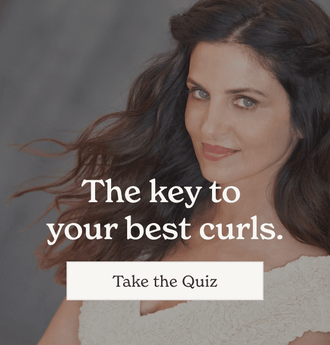By Kate Sullivan
Lather is a Curl-Killer
Every retro shampoo commercial features a rich, sudsy lather—it looks like it’s doing an important job! And it is. That job is selling shampoo. Very foamy shampoos tend to sell better. They don’t necessarily clean hair “better,” though (according to Scientific American)—and they’re certainly not the best buy for folks with curls.
What Do Sulfates Do To Curls?
“Surfactants,” the unsexy name for the chemical compounds that produce lather, sweep away dirt and oil but can take a curl or wave’s moisture down the drain too. Sulfates are the most effective surfactants, the strongest detergents—and the most controversial. Despite what you may have heard, there’s no direct line between the sulfates common in shampoo (sodium lauryl sulfate and sodium laureth sulfate) and cancer—but they certainly remove more than last night’s hair spray. While short hair is literally newer and more resilient, longer curls especially are vulnerable to the repeated drying effects of detergent-heavy shampoos.
Curl-havers’ bounce and shine rely on retaining more of their hair’s natural, protectant oils. Spiraling strands already make these oils’ journey down the shaft less straightforward—so curly hair tends to be drier than straight hair from the start. Add a sulfate shampoo that strips those oils like old wallpaper, and those even drier, brittle curls are prone to breakage. Super-lathering sulfates also lead to frizz—use a drying shampoo formula and then expose your damaged, porous strands to a humid atmosphere, and boom, you’ll look like you stuck your finger in an electrical socket.
If dry curls have been a problem for you, it’s time to ditch the lather. If you have sensitive skin, that’s yet another reason to try a new lather-low routine. Shampoos with sulfates can aggravate the scalp, causing dermatitis and eczema and inflaming rosacea.
Your Sulfate-free Cleansing Options
No Poo: If you have textured hair, you’ve likely heard about the “No Poo” movement. This school of thought advises using non-shampoos like baking soda and apple cider vinegar or simply water alone to cleanse the scalp and hair. There’s often an adjustment period—hair may look greasier than usual for a few weeks. Devotees swear healthy, bouncy hair is worth the wait, and that brushing hair from root to tip regularly helps distribute those oils. No poo can be challenging for folks who really get down and dirty, though.
Co-wash: Co-washes use a careful balance of conditioning ingredients like coconut oil and shea butter to moisturize and cleanse curls. This is a rinse and repeat method: Start by working the product onto your scalp, rinse, then work another dollop throughout the rest of your hair. Follow the instructions on your bottle. The recommended amount changes from product-to-product, but with co-wash, the pours tend to be much more generous than with traditional shampoos. If you have especially coarse, dry curls, you might co-wash three times a week. But exclusively using these specially formulated cream cleansers can leave build-up on the scalp and weigh curls down.
No lather shampoo (or low lather shampoo): Sulfate-free, no lather shampoos (which use other, gentler surfactants like sodium lauryol glutamate or sodium lauroamphoacetate) work similarly to their sulfated sisters. After a truly soaking-wet rinse, use your finger pads (not your nails—ouch!) to massage a teaspoon-sized blob all around your scalp. (If you’re using a lather-free shampoo bar, rub it directly on your scalp or between your hands and then distribute the cleanser deeply with your hands.) Then use your fingers to work that activated product down your strands. Do this maybe one to four times per week. It’s tricky to tell someone exactly how often they should cleanse without knowing their hair or lifestyle (dirty job, avid workout schedule)—experiment to find out what works for you. Similarly, if you have short hair or not-so-dirty hair, use less shampoo. If you have a ton of hair and it’s filthy, use more.
So, Is There a “Right Way” To Wash Your Curls?
Whatever care product you use, working the product into the hair is the key—treat shampooing like a treatment. The word “shampoo” is derived from the Hindi word chāmpo, which means to knead or press. The point of shampooing isn’t just to slap a sweet-smelling blob on your head and expect it to work its magic; the finger motion is part of cleansing.
Just to Clarify: When to Use Sulfates
Eliminating deep-cleaning sulfates by using no lather shampoo from your regular hair-cleansing routine may mean you have some styling product build-up from time to time. A clarifying shampoo will pull away non-water-soluble silicones leftover from your curl products, any dry shampoo residue, etc. There are gentle sulfate-free and low-lather clarifying shampoos out there but in the modern era of Sesame Street, Cookie Monster tells kids that “Cookies are a sometimes snack”—and welp, sulfates can be like that too.
If you use a lot of styling products in your daily hair-care, you might want to use a more intense clarifying shampoo with sulfates once or twice a month even if you are using a no lather shampoo more often. (Again, experiment.) But even without sulfates, squeaky-clean clarifying shampoos aren’t a curly person’s best friend.
Have you already ditched the lather? Share your story with the hashtag #RoyalLocks

